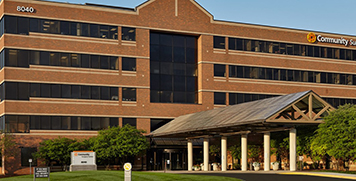- Anatomy
- Conditions
- Procedures
Total Knee Replacement
Total knee replacement, also called total knee arthroplasty, is a surgical procedure in which the worn out or damaged surfaces of the knee joint are removed and replaced with an artificial prosthesis.
Unicompartmental/Partial Knee Replacement
Unicompartmental knee replacement is a minimally invasive surgery in which only the damaged compartment of the knee is replaced with an implant. It is also called a partial knee replacement. The knee can be divided into three compartments: patellofemoral, the compartment in front of the knee between the kneecap and thighbone, the medial compartment, on the inside portion of the knee, and lateral compartment which is the area on the outside portion of the knee joint.
Patient Specific Knee Replacement
Patient Specific Knee Replacement is a newer technology in total knee replacement surgery. It is an advanced procedure using an individualized patient-specific knee implant for replacement of all three components of the knee. The difference with patient specific knee replacement from other knee replacement surgeries is the use of an MRI scan prior to the surgery that provides a clear view of the shape and structure of the different components of the joint. The implants are then designed specifically to match the natural shape of the articulating surfaces of the patient’s knee based upon the MRI. Unlike other knee replacement surgeries, patient specific knee replacement can also be used for severe knee arthritis.
Revision Knee Replacement
Revision knee replacement surgery involves replacing a part or all your previous knee prosthesis with a new prosthesis. Although total knee replacement surgery is successful, sometimes the procedure can fail due to various reasons and may require a second revision surgery.
Knee Fracture Surgery
A knee fracture is a broken bone or a crack in or around the joint of the knee. This can involve the tibia (shin bone), the kneecap (patella), or femur (thighbone) where they connect with the knee. Knee fracture surgery is a surgical procedure performed to correct the cracked or broken bones in or around the knee to restore normal anatomical function, stability, and motion.
Outpatient Total Knee Replacement
Total knee replacement is the surgical treatment for knee arthritis, where the damaged knee is removed and replaced with an artificial knee implant. Traditionally performed as an inpatient procedure, total knee replacement surgery is now being conducted on an outpatient basis, allowing you to go home on the same day of the surgery. This is made possible with recent advances such as improved perioperative anesthesia, minimally invasive techniques and initiation of rehabilitation protocols soon after surgery.
Robotic Assisted Partial Knee Surgery
Robotic-assisted partial knee surgery is an innovative alternative to the conventional surgical procedure to treat degenerative knee diseases such as osteoarthritis. It is performed using robotic-arm technology that allows your surgeon to precisely perform the surgery through small incisions.
Minimally Invasive Knee Joint Replacement
Total knee replacement is a very successful surgical treatment for knee arthritis. Over the years, minimally invasive knee replacement surgical techniques have been developed to lessen tissue trauma and improve patient outcomes. This minimally invasive approach involves much smaller incisions than the usual 10-12 inch incisions used in the traditional knee replacement and spares the quadriceps muscle and tendon, which control bending of the knee, from being cut to access the knee joint.
Outpatient Unicondylar Knee Replacement
A unicondylar knee replacement, also known as unicompartmental or partial knee replacement, is a procedure to replace a portion of the damaged knee joint with a prosthetic implant to relieve pain and improve function of the knee joint. Traditionally performed as an inpatient procedure, advances in technology have allowed this procedure to be performed in a minimally invasive manner on an outpatient basis allowing patients to go home the same day of the surgery
Complex Total Knee Replacement
Total knee replacement, also called total knee arthroplasty, is a surgical treatment for painful arthritis of the knee in which the worn-out or damaged surfaces of the knee joint are removed and replaced with an artificial prosthesis. Complex total knee replacement is employed in patients whose arthritis is especially severe, or who have already undergone a previous knee replacement in the same leg. The surgery takes about 2 to 3 hours to perform.
Patellofemoral Knee Replacement
Traditionally, arthritis in only one compartment of the knee is treated by partial knee replacement surgery. Patellofemoral knee replacement is a minimally invasive surgical option performed in the patellofemoral compartment only, preserving the knee parts not damaged by arthritis as well as the stabilizing anterior and posterior cruciate ligaments (ACL and PCL). The smaller implants used with a partial knee replacement surgery are customized to your anatomy based upon CT scans of your knee.
Computer Navigation for Total Knee Replacement
Computer navigation provides your surgeon with real-time 3-D images of your mapped knee and the surgical instruments during surgery. The data for the images is provided by infrared sensors fixed to the bones of the knee and surgical instruments. Their position is tracked by an infrared camera placed above the surgical table, which is connected to a computer. The computer then generates real-time images with the help of the appropriate software to guide your surgeon to precisely resurface and cut the bones of the knee, and fix the implant precisely and accurately according to the preoperative surgical plan.
Custom-fitted Total Knee Arthroplasty
Custom-fitted total knee arthroplasty is a newer more advanced technology in total knee replacement surgery that uses an individualized patient-specific knee implant for the replacement of all three components of the knee. The difference with custom knee replacement from other knee replacement surgeries is the use of an MRI scan prior to the surgery to obtain a clear view of the shape and structure of the different components of the joint. The implants are then designed specifically to match the natural shape of the articulating surfaces of your knee based upon the MRI. Unlike other knee replacement surgeries, custom-fitted total knee replacement can also be used for severe knee arthritis.
What is New in Knee Replacement
If you are considering knee replacement surgery, there are new developments under study which can help enhance the quality of life.
Knee Surgery
Knee surgery is a surgical procedure for the treatment of a knee injury or condition. The procedure involves repairing diseased or damaged structures of the knee joint in order to eliminate pain and restore normal function. The knee is a complex joint made up of different structures - bones, tendons, ligaments, and muscles. They all work together to maintain the knee’s normal function and provide stability to the knee during movement. Any damage to these structures may warrant a knee surgery.
Patellar Tendon Repair
Patellar tendon repair is the surgery performed to reattach the torn tendon to the kneecap and to restore normal function in the affected leg.
Meniscal Surgery
Meniscal surgery is a surgical procedure employed for the treatment of torn or damaged meniscal tissues in the knee. It is mostly performed as a minimally invasive keyhole procedure.
Viscosupplementation
Viscosupplementation refers to the injection of a hyaluronan preparation into the joint. Hyaluronan is a natural substance present in the joint fluid that assists in lubrication. It allows the smooth movement of the cartilage-covered articulating surfaces of the joint.
Physical Therapy for Knee
Physical therapy is an exercise program that helps you to improve movement, relieve pain, encourage blood flow for faster healing, and restore your physical function and fitness level. It can be prescribed as an individual treatment program or combined with other treatments. It involves a combination of education, manual therapy, exercises and techniques such as water, heat, cold, electrical stimulation and ultrasound.
Physical Examination of the Knee
A complete physical examination of the knee is performed when you present to your doctor with a knee complaint. Both of your knees are examined and the results of the injured knee are compared to those of the healthy knee.
Pre-op and Post-op Knee Guidelines
Planning for your knee surgery prepares you for the operation and helps to ensure a smooth surgery and easier recovery.

































